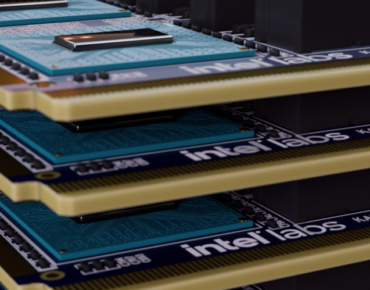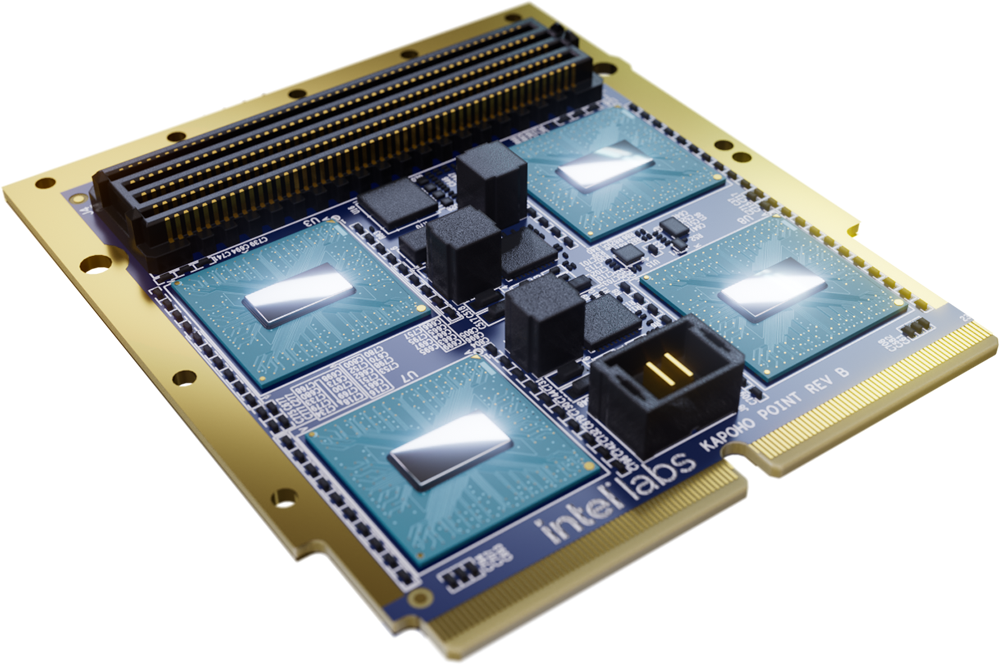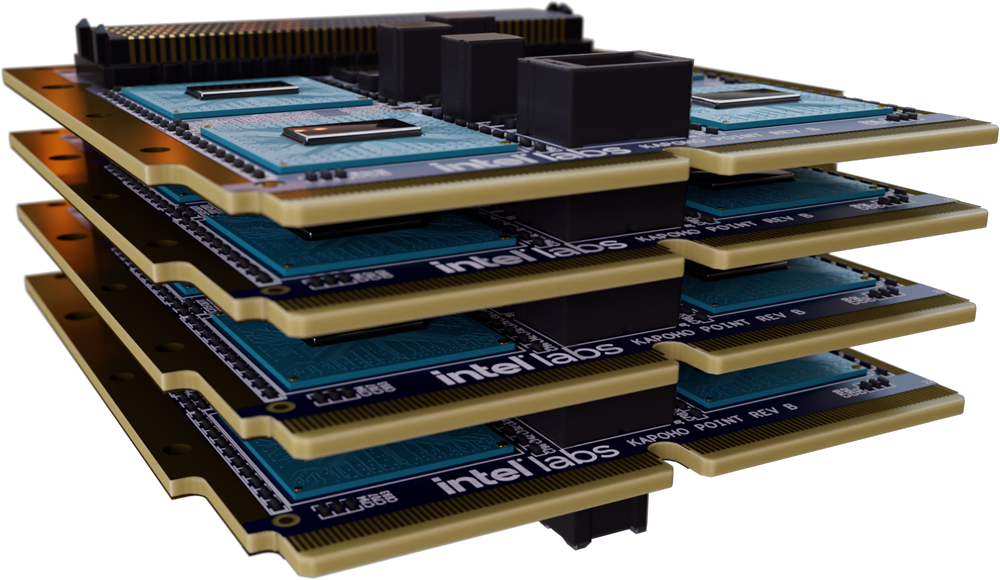Intel Labs Launches Loihi 2-Based ‘Kapoho Point’ Board

Over the past five years, Intel has been iterating on its neuromorphic chips and systems, aiming to create devices (and software for those devices) that closely mimic the behavior of the human brain through the use of computational “neurons.” When Loihi 2 was announced, it was only accessible via Intel’s neuromorphic research cloud to select members of the Intel Neuromorphic Research Community (INRC); now, availability of Loihi 2 is expanding through the announcement of Kapoho Point, a compact development board for neuromorphic computing that features eight Loihi 2 chips.
“We launched the Loihi neuromorphic chip five years ago,” said Mike Davies, senior principal engineer for and director of Intel’s Neuromorphic Computing Lab. “Over the last five years, we’ve built out a number of different boards and form factor systems using the Loihi chip, everything from small USB-type form factor devices up to the large rack-mounted box … with 768 Loihi chips in it.”
“A year ago we announced the Loihi 2 chip, and it improves Loihi 1 in almost all dimensions,” Davies continued. “it’s faster; it’s higher-bandwidth in its communications between chips, so we can scale up and solve larger problems much more effectively now; it has more capacity per chip, and the chip is smaller thanks to process scaling; [and] we have a lot more programmability in the chip[.]”
Kapoho Point (which, like all of Intel’s neuromorphic releases thus far, is named after Hawaii's volcanic geography) marks a new form factor for Intel: an ultracompact board about three inches square (Davies likened it to a credit card) with four Loihi 2 chips on its top side and another four on its underside, for a total of eight Loihi 2 chips at “the most minimal scale possible.”
Davies said that Kapoho Point can represent “up to a million neurons” and “up to a billion synapses” — “a pretty good scale of network size just in this very compact form factor.” It can solve optimization problems (an area of particular strength for neuromorphic computing) with up to 8 million variables and, according to Intel, with up to 1000× better energy efficiency than a state-of-the-art CPU solver.
“Another property you’ll see in this diagram about Kapoho Point is that it’s stackable,” Davies said. “You can just layer these on through this expansion port you see on the board there and build out to a larger capability. We’ve assembled stacks as [high] as four boards here that get up to 32 million neurons, which is quite a reasonable scale, especially if you think about optimization problems.” Davies said that Intel expected Kapoho Point to be stackable up to eight boards before other form factors would become more desirable solutions.
Davies said that Intel was excited to see where Kapoho Point would be used by the research community, highlighting potential applications in areas such as robotics and drones. Intel’s Loihi and Loihi 2 chips have been used, to date, in applications ranging from robotics control and gesture recognition to scene understanding and smell identification.
Kapoho Point has already delivered to select partners (it’s a “real working system,” Davies said). The Air Force Research Laboratory (AFRL) was the first research partner to receive the board, and Intel says that the AFRL is using it to research spiking neural network-based learning and real-time optimization. . “Because AFRL’s missions are in the air and in space, mobile platforms have limited space, weight and power budgets,” said Qing Wu, senior scientist for processing and exploitation at the AFRL. “Neuromorphic computing technology offers us the best computing solution to run AI algorithms in the environment.”
Alongside the Kapoho Point announcement, Intel highlighted recent additions to its Lava software framework aimed at enabling Loihi 2. The company also unveiled the latest round of its sponsored INRC projects, via which Davies said Intel is “funding academic groups to help us scout the frontier of neuromorphic algorithm and application development using the Loihi architecture.” The recipients include Brown University; ETH Zürich; George Mason University; the Graz University of Technology; Pennsylvania State University; the Queensland University of Technology; the University of Göttingen; and the University of Waterloo. Research areas range from auditory feature detection to brain-computer interfaces.













